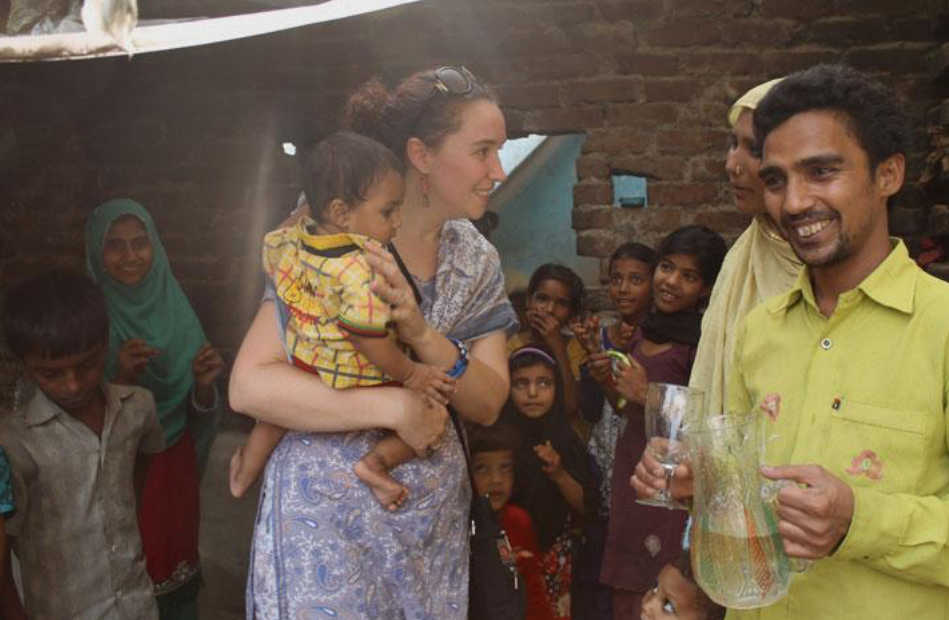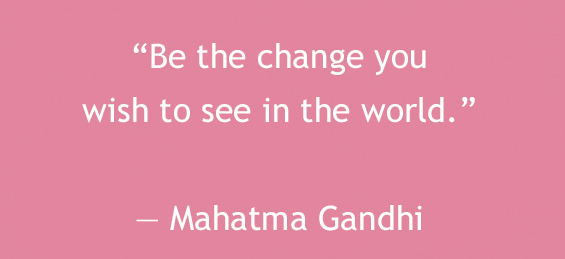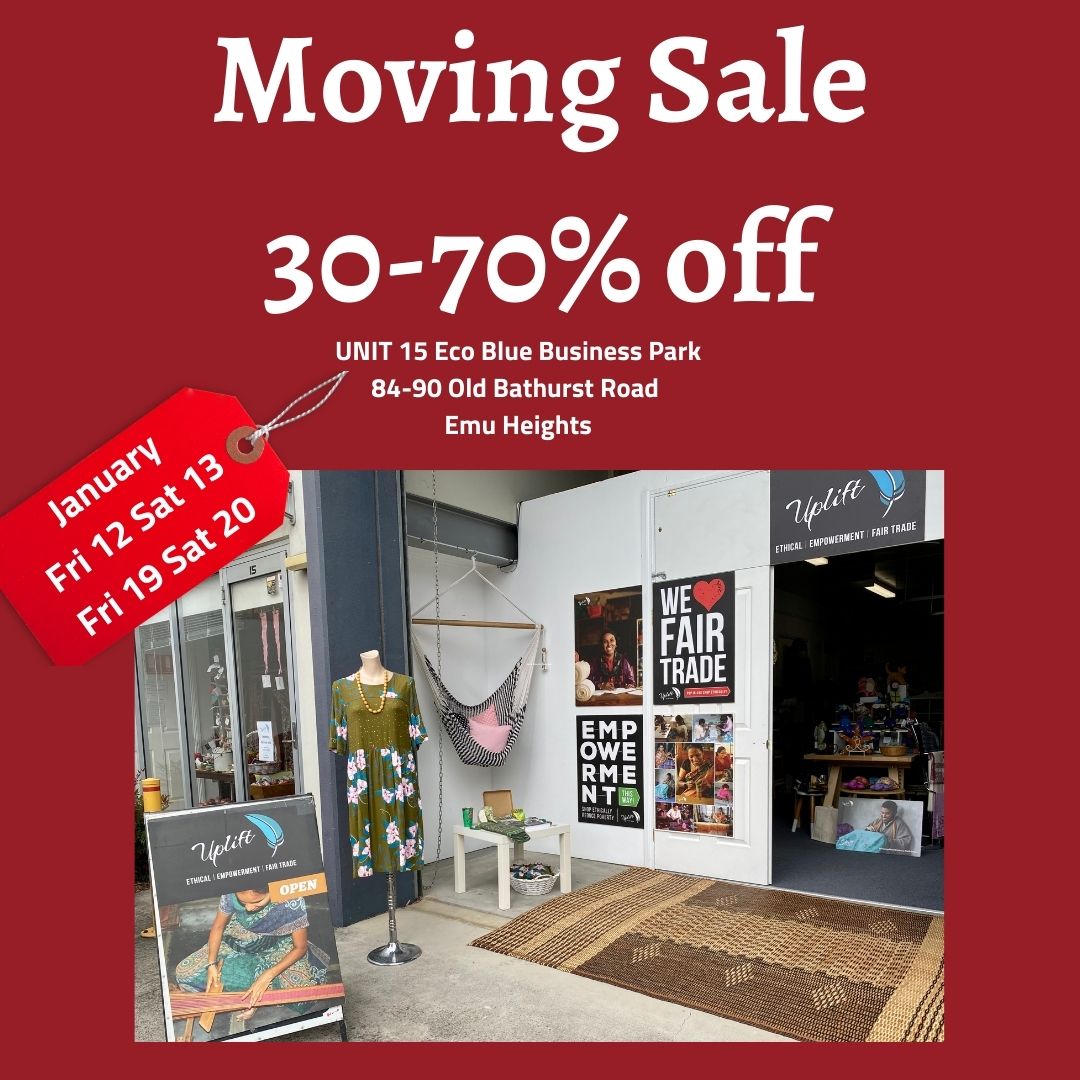India 2015 - Visiting KHJ Artisans

After a 3 and half hour drive from Delhi, we begin a slow wind into a tight street in Upper Pradesh. We were greeted on the street by 4 brothers who run KHJ - who show us firstly into a small working space beneath their house. They demonstrated how beads and frames are smoothed and buffed, and then showed us into a nearby storeroom where a large variety of the products were kept. After a cool drink we are ushered onto the street and down a lane.





The strong smell of sewer enveloped us as we passed workshops in full swing each side. Generally people bent over cutting and sanding wheels, in semi darkness with low light and low air. One working area was piled in jeans with sewing machines setup within. Shortly we were shown into a gated, open air courtyard, the main working area of KHJ.



Seated on a carpet were a couple of Artisans who were filing down bangle rings. The brothers demonstrated for us the various processes involved including how they worked the bone, shell and resin to create various products - starting up a large, noisy machine which had several work stations where they cut, sand, buff and shape materials. They also showed us the large press which they were able to flatten bone out using pressure and water.




Matthew translated: “The Artisans prefer to work here because here they (KHJ) provide all the fair trade standards, working conditions and working wages so they like to work here, but when there is no orders, there is no business… when they come they do just 8 hours work. 8 oclock to 4 oclock. They have a lunch break, tea break all that is privileges which are given here, but when they go outside in the commercial establishments, there is no lunch break, no tea break, nothing like that, they have to finish their work quickly and maybe that’s from 8 to 8, 12 hours work.”
Back through the lane, to the house and we were greeted by a full range of jewellery on display - much to Anna’s delight. Rings, bangles, necklaces, cuffs all created in the small courtyard we had just seen. Anna spent a good amount of time making her selections while the courteous brothers described how each was made, and what it consisted of.

Upstairs and rows of beautiful frames and boxes met us, again to Anna’s joy! The KHJ products are so beautifully crafted, there really is a workmanship about them - to see them all in this context was very special. By this time the smells of a home-cooked meal filled the space as she inspected the products.

With orders finally completed we were invited to sit and were given a generous and delicious meal - something with chicken, breads and dips - even when being far too full we were encouraged to have more.
After lunch we talked with the brothers about the business, about the disabled artisan that we had seen that day and their plans for fair trade. 23 year old, had been working with them for 3 years, initially approached them for work - when they discovered he had problems with his knee and the medicines he was taking was making him overheat - they took him to a doctor, who diagnosed it as cancer and he is having treatment, though they may still need to amputate. He now works with KHJ and his fair wages help him to pay for his medicine and to earn a living.
Women from the villages also contribute to this project, with the beading of the necklaces when the work is there - but it is all dependant on their order.
After lunch, the brothers had something else to show us, and we wound through some very tight streets into a much poorer area of UP. We pulled up to a couple of open paddocks, stacked with dung with some rough brick buildings on the other side. The brothers told us they had plans to buy this land and create a school on it for the local children, who had no support and nowhere to go. Later we were to find out that they were working with other members of the community to establish this, as the government would not help these people.






They took us to meet the family of the artisan and we were taken into a small space inside one of the brick homes. The floor was mud and dirt, Two cows were tied down inside a cornerstall in the main living space, the roof was roughly strung tarps, with darkened brick rooms towards the back. There were some 4 families living in there and a crowd of 30 - 40 people staring as we sat with them, all the neighbours kids had come to see.
Grubby little faces stared back at us, some smiling, some terrified as a little curious baby goat come to lick Matthews fingers. Their mothers started laughing, pushing them forward as Anna went into them to see who would shake her hand - they ran from her laughing, until one little girl shook it, and then they gathered around her shyly, or laughed into their hands. We met the Artisan who worked with the brothers and he beamed as his baby reached for Anna and was comfortable being held by her. Kids appeared on the roof saying things, that no-one would translate for us and an old man washed his feet in the corner probably wondering what had come to his house.
All those little faces peering at us - this was what the brothers had wanted us to see. Their plan was to create a school for these children who were left to wander. “There is nothing” one of the brothers said to me - Nothing here for them is what I understood, no future. The brothers with other members of their community were attempting to change that and hoped we would be a part of it.
There was a lot to think about on the journey back to Delhi.
Leave a comment
Comments will be approved before showing up.
Also in Fair Trade Stories & Case Studies

Not an ethical shopping guide
Is the Baptist World Aid Ethical Fashion Guide an ethical shopping Guide?
No but it's an amazing report that will help you to take action to speak up about exploitation in the fashion industry.
In this Blog we give advise on to what is a good guide to help you shop ethically.

The Wounds You Can’t See: Emotional Abuse, Manipulation, and the Courage to Speak Out
At Uplift Fair Trade, we believe in true empowerment—helping women and marginalised communities reclaim dignity through fair, meaningful work. Many of our artisans have experienced domestic abuse, and Fair Trade offers them not just income, but healing and hope. In this personal blog, our founder Anna shares her own story of surviving emotional abuse and reflects on how we as a society can better support victims with compassion and respect.



David Shooter
Author